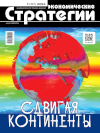Regulatory Guillotine — a Vector for Updating Regulatory Legal Acts
DOI: 10.33917/es-6.198.2024.56-63
The author examines peculiarities of the influence of the “regulatory guillotine” mechanism, aimed at eliminating duplicate requirements and introducing reasonable standards. The article analyzes requirements for regulatory legal acts (using regional practices as an example), the purpose of which is to reduce the excessive administrative burden on a business entity.
References:
1. Mekhanizm “regulyatornoy gil’otiny” [Mechanism of the “Regulatory Guillotine”]. Ministerstvo ekonomicheskogo razvitiya RF, available at:
https://economy.gov.ru/material/directions/gosudarstvennoe_upravlenie/mehanizm_regulyatornoy_gilotiny/
2. Federal’nyy zakon ot 31 iyulya 2020 g. N 247-FZ “Ob obyazatel’nykh trebovaniyakh v Rossiyskoy Federatsii” [Federal Law of July 31, 2020 No. 247-FZ “On Mandatory Requirements in the Russian Federation”]. Sobranie zakonodatel’stva RF, 2020, no 31.
3. Federal’nyy zakon ot 11 iyunya 2021 g. N 170-FZ “O vnesenii izmeneniy v otdel’nye zakonodatel’nye akty Rossiyskoy Federatsii v svyazi s prinyatiem Federal’nogo zakona ‘O gosudarstvennom kontrole (nadzore) i munitsipal’nom kontrole v Rossiyskoy Federatsii’” [Federal Law of June 11, 2021 No. 170-FZ “On Amendments to Certain Legislative Acts of the Russian Federation in Connection with the Adoption of the Federal Law ‘On State Control (Supervision) and Municipal Control in the Russian Federation’”]. Sobranie zakonodatel’stva RF, 2021, no 24 (Chast’ I).
4. Postanovlenie Konstitutsionnogo suda RF ot 19 aprelya 2021 g. N 14-P [Resolution of the Constitutional Court of the Russian Federation of April 19, 2021 No. 14-P]. Sobranie zakonodatel’stva RF, 2021, no 17.
5. Tikhomirova L. A. Reforma kontrol’no-nadzornoy deyatel’nosti (“regulyatornaya gil’otina”) v sfere promyshlennoy bezopasnosti [Reform of Control and Supervisory Activities («Regulatory Guillotine») in the Field of Industrial Safety]. SPS “Konsul’tantPlyus”, 2021.
6. Postanovlenie Arbitrazhnogo suda Vostochno-Sibirskogo okruga ot 28 marta 2023 g. po delu N A33-2059/2022 [Resolution of the Arbitration Court of the East Siberian District dated March 28, 2023 in case No. A33-2059/2022]. Dostup iz SPS “Konsul’tant Plyus”.
7. Postanovlenie Devyatogo arbitrazhnogo apellyatsionnogo suda ot 21 marta 2024 g. po delu N A40-139576/2023 [Resolution of the Ninth Arbitration Court of Appeal dated March 21, 2024 in case No. A40-139576/2023]. Dostup iz SPS “Konsul’tant Plyus”.
8. Opredelenie Verkhovnogo Suda Rossiyskoy Federatsii ot 16 sentyabrya 2020 g. N 305-ES20-4513 [Definition of the Supreme Court of the Russian Federation dated September 16, 2020 No. 305-ES20-4513]. Dostup iz SPS “Konsul’tant Plyus”.
9. Federal’nyy zakon ot 6 dekabrya 2011 g. № 402-FZ “O Bukhgalterskom Uchete” [Federal Law No. 402-FZ of December 6, 2011 “On Accounting”]. Rossiyskaya gazeta, 2011, no 278.
10. Nalogovyy kodeks Rossiyskoy Federatsii (chast’ pervaya) ot 31 iyulya 1998 g. N 146-FZ [Tax Code of the Russian Federation (part one) of July 31, 1998 No. 146-FZ]. Sobranie zakonodatel’stva RF, 1998, no 31.















